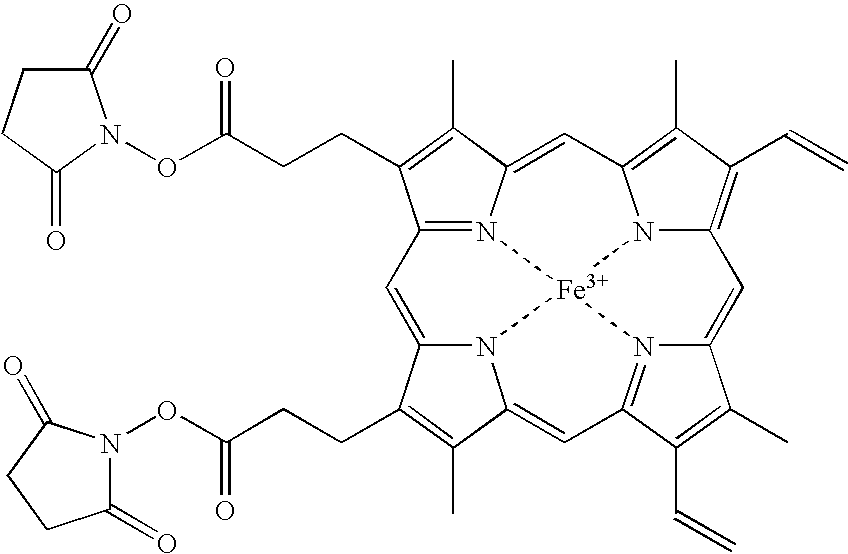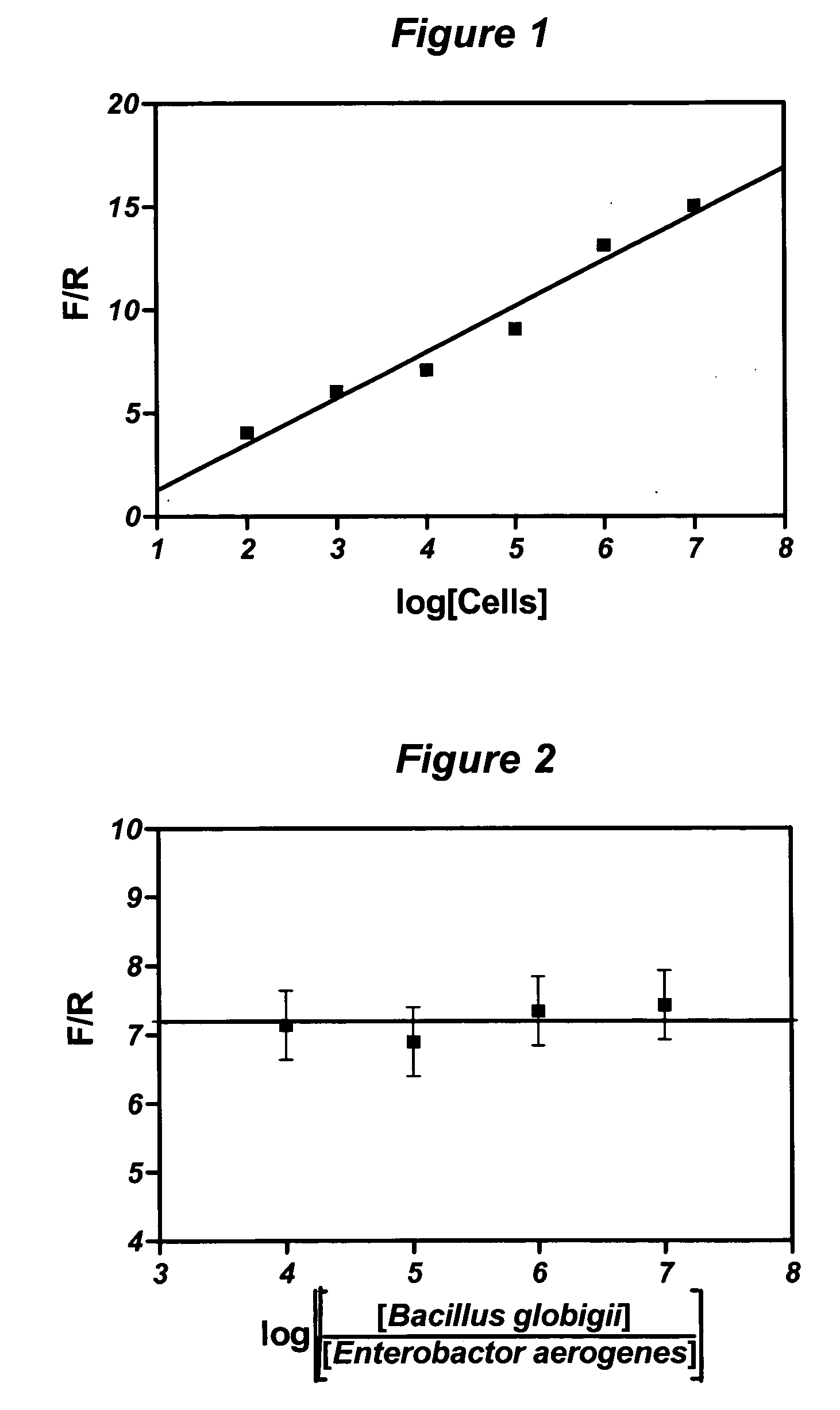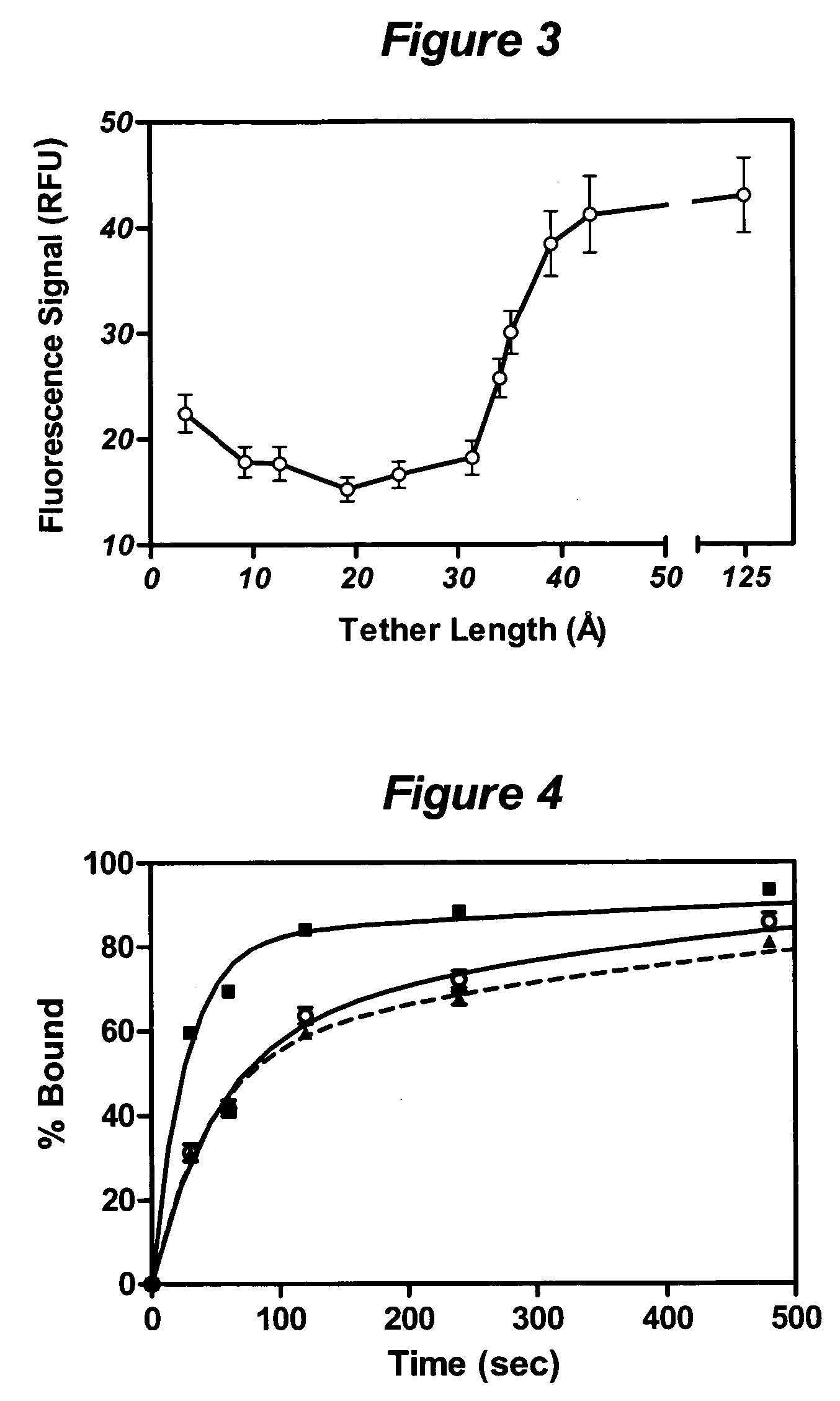Method for the rapid taxonomic identification of pathogenic microorganisms and their toxic proteins
- Summary
- Abstract
- Description
- Claims
- Application Information
AI Technical Summary
Benefits of technology
Problems solved by technology
Method used
Image
Examples
Embodiment Construction
class="d_n">[0027] The capture of a pathogenic bacterium (Salmonella typhimurium) with tethered heme, as outlined in the present invention, is shown in FIG. 1. The method and apparatus outlined in U.S. Pat. No. 5,968,766 was employed for the detection of the captured bacteria. Although numerous compatible bacterial detection methods could have been employed, this method was used due to its ability to detect such small numbers of bacteria on the slide. Inspection of the figure shows that the detection limit (<100 cells) of the captured microorganism using a tethered heme ligand is lower than that observed using immunological methods (ca. 400 cells under optimal conditions). Binding between the microorganism and the heme ligand is not as sensitive to pH, ionic strength and temperature as is binding to an antibody. The heme ligand is also less expensive, requires less careful storage and is not susceptible to proteolysis as are antibodies.
[0028]FIG. 2 shows the tethered heme capture of...
PUM
 Login to View More
Login to View More Abstract
Description
Claims
Application Information
 Login to View More
Login to View More - R&D
- Intellectual Property
- Life Sciences
- Materials
- Tech Scout
- Unparalleled Data Quality
- Higher Quality Content
- 60% Fewer Hallucinations
Browse by: Latest US Patents, China's latest patents, Technical Efficacy Thesaurus, Application Domain, Technology Topic, Popular Technical Reports.
© 2025 PatSnap. All rights reserved.Legal|Privacy policy|Modern Slavery Act Transparency Statement|Sitemap|About US| Contact US: help@patsnap.com



